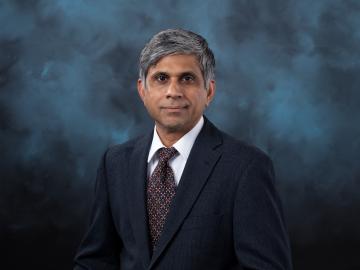
Filter News
Area of Research
- (-) Materials (61)
- (-) Supercomputing (88)
- Advanced Manufacturing (2)
- Biological Systems (1)
- Biology and Environment (69)
- Computational Biology (1)
- Computational Engineering (1)
- Computer Science (4)
- Energy Science (86)
- Fusion and Fission (4)
- Isotopes (5)
- Materials for Computing (9)
- National Security (31)
- Neutron Science (33)
- Nuclear Science and Technology (2)
- Quantum information Science (5)
News Type
News Topics
- (-) Bioenergy (17)
- (-) Biomedical (15)
- (-) Clean Water (2)
- (-) Cybersecurity (8)
- (-) Energy Storage (27)
- (-) Machine Learning (13)
- (-) Microscopy (20)
- (-) Quantum Science (28)
- (-) Summit (36)
- 3-D Printing/Advanced Manufacturing (20)
- Advanced Reactors (2)
- Artificial Intelligence (36)
- Big Data (17)
- Biology (13)
- Biotechnology (2)
- Buildings (6)
- Chemical Sciences (27)
- Composites (5)
- Computer Science (80)
- Coronavirus (14)
- Critical Materials (8)
- Environment (29)
- Exascale Computing (23)
- Frontier (29)
- Fusion (4)
- Grid (8)
- High-Performance Computing (38)
- Isotopes (12)
- ITER (1)
- Materials (62)
- Materials Science (57)
- Mathematics (2)
- Molten Salt (2)
- Nanotechnology (32)
- National Security (8)
- Neutron Science (36)
- Nuclear Energy (14)
- Partnerships (11)
- Physics (30)
- Polymers (10)
- Quantum Computing (17)
- Security (7)
- Simulation (13)
- Software (1)
- Space Exploration (3)
- Transportation (12)
Media Contacts

Scientists at ORNL used neutron scattering to determine whether a specific material’s atomic structure could host a novel state of matter called a spiral spin liquid.

Researchers at ORNL are tackling a global water challenge with a unique material designed to target not one, but two toxic, heavy metal pollutants for simultaneous removal.

To optimize biomaterials for reliable, cost-effective paper production, building construction, and biofuel development, researchers often study the structure of plant cells using techniques such as freezing plant samples or placing them in a vacuum.

Jagjit Nanda, a distinguished staff scientist, has been elected a fellow of the Materials Research Society. The lifetime appointment recognizes outstanding members whose sustained and distinguished contributions to the advancement of materials research are internationally recognized.

The Frontier supercomputer at the Department of Energy’s Oak Ridge National Laboratory earned the top ranking today as the world’s fastest on the 59th TOP500 list, with 1.1 exaflops of performance. The system is the first to achieve an unprecedented level of computing performance known as exascale, a threshold of a quintillion calculations per second.

ORNL scientists will present new technologies available for licensing during the annual Technology Innovation Showcase. The event is 9 a.m. to 3 p.m. Thursday, June 16, at the Manufacturing Demonstration Facility at ORNL’s Hardin Valley campus.

Researchers at ORNL are teaching microscopes to drive discoveries with an intuitive algorithm, developed at the lab’s Center for Nanophase Materials Sciences, that could guide breakthroughs in new materials for energy technologies, sensing and computing.

ORNL researchers used the nation’s fastest supercomputer to map the molecular vibrations of an important but little-studied uranium compound produced during the nuclear fuel cycle for results that could lead to a cleaner, safer world.

Miaofang Chi, a scientist at ORNL, has been elected a Fellow of the Microscopy Society of America.

A team of researchers has developed a novel, machine learning–based technique to explore and identify relationships among medical concepts using electronic health record data across multiple healthcare providers.


